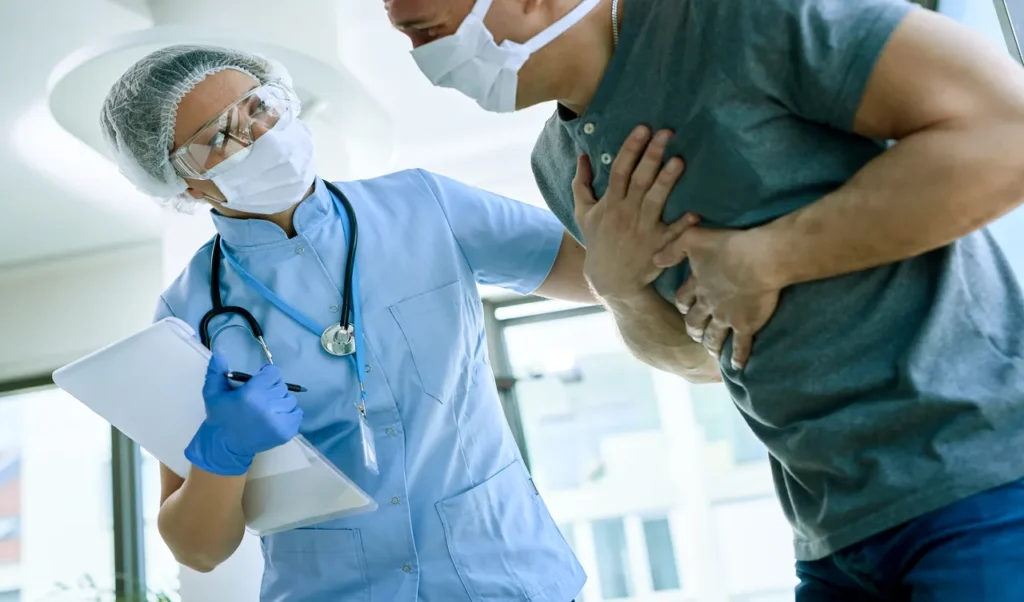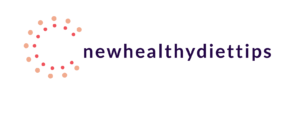Has your chest pressed suddenly? Feel breathless without reason? Your symptoms may indicate a heart attack. Heart attacks are urgent medical issues. Common heart attack ke lakshan help you recognize and treat someone immediately.
Healthy eating and exercise help prevent many heart attacks. We try, yet heart attacks still happen. Risk increases with age, significantly beyond 50. Everyone should know the symptoms because men and women have distinct ones.
If you or someone else has heart attack ke lakshan, intervene quickly. Notify emergency services immediately. Early treatment with CPR, medicines, or surgery can save lives and limit heart muscle damage. Heart attack knowledge might save your life.
Chest Pain or Discomfort
The most frequent heart attack ke lakshan is chest pain. The center of your chest may feel pressure, squeezing, fullness, or discomfort. Pain may spread to the arms, back, neck, jaw, or stomach.
• Chest tightness or discomfort usually lasts several minutes or recurs. It might feel like someone is on your chest.
• Symptoms of upper body pain include soreness in the arms, back, shoulders, neck, or jaw. Lack of oxygen to the cardiac muscle causes this.

• Nausea and cold sweat: Feel ill, lightheaded, or break out in cold sweat. Your body goes into shock from cardiac oxygen deprivation.
• Shortness of breath might make it hard to breathe or catch your breath. Shortness of breath can occur quickly before or during chest pain.
• Your heart may beat too quickly, too slowly, or irregularly. Adults’ resting heart rates are 60–100 bpm. Your heart rate may rise or fall during a heart attack.
• Anxiety and denial: Some individuals may feel doomed or reject a heart attack. Call 911 if you have heart attack symptoms. Early treatment is crucial.
A heart attack can affect men and women differently. Women report increased breathlessness, nausea/vomiting, and back/jaw discomfort. Men usually get chest pressure and left arm discomfort. Do not dismiss symptoms as indigestion or anxiousness. If someone has a heart attack, call 911. Early treatment saves lives.
Shortness of Breath: Heart Attack Ke Lakshan
One of the most scary symptoms is shortness of breath, which makes you feel like you can’t breathe. You may tire after a bit of exertion. Your heart isn’t pumping enough oxygen-rich blood to your body and lungs. Some outline it as follows:
• Chest pressure or tightness
• Feeling smothered or unable to breathe
• Sitting up to breathe easier
• Gasping for air
Call 911 if you look heart attack ke lakshan or unexplained chest discomfort and shortness of breath. This may suggest a heart attack and requires rapid care.
Stay calm and restful while waiting for emergency responders. Sit up, loosen your neckwear, and breathe slowly. Do not lie flat. An oxygen mask from paramedics may boost your oxygen levels.
In the emergency department, doctors will screen for heart attacks and other cardiac events. Clot-busting medicines, angioplasty, or bypass surgery may be needed to restore cardiac blood flow. Being hospitalized is frequently needed for cardiac and breathing monitoring.
Nausea and Vomiting
Heart attacks can cause nausea and vomiting, especially in women. Nausea can range from moderate stomachache to vomiting. This is due to poor cardiac muscle blood supply.
Your vagus nerve activates when your heart muscle strains to pump, causing nausea. Nausea may occur abruptly or gradually, with cold chills, lightheadedness, or chest discomfort. Nausea without an apparent reason, like the flu, may indicate a heart attack, especially in older persons or those with heart problems.
Sweating and Chills
Most heart attack ke lakshan include sweating and chills. Your body goes into overdrive as your heart attempts to pump oxygenated blood.
Sweating
Cold, clammy sweat may break out. Your body attempts to cool off when your heart works hard. Your clothing may be drenched with sweat. It can happen in a cool room. Sudden profuse perspiration, especially if linked to chest pain or discomfort, requires medical assistance.
Chills
You may shiver uncontrollably or feel cold. Your body’s temperature regulation goes wild in reaction to heart strain. Even if you were warm, chills might strike abruptly. Avoid using blankets or heat sources to warm yourself; this may increase your symptoms.
Emergency aid should be called for heart attack ke lakshan. Early heart attack therapy can save a life by avoiding cardiac muscle damage. Immediately seek medical attention if a heart attack is suspected—the time muscle.
Pain in the Jaw, Neck, or Back of Heart Attack Ke Lakshan
Heart attack discomfort might extend to the jaw, neck, or back. This is because cardiac nerves supply these locations.
Jaw pain
Jaw difficulty may come and go during a heart attack. Some call it pressure, fullness, or squeezing. Pain may reach your ear. If you have jaw discomfort, contact 911 since it may indicate a heart attack.
Neck discomfort
Neck pain may radiate from your chest. Neck tightness, pinching, or stiffness may occur. Heart attack neck discomfort is commonly defined as “choking”. Unexplained neck discomfort, chest tightness, or shortness of breath require medical attention.
Painful back
Heart attack pain might spread backward. The center of your back, between the shoulder blades, may hurt. Emergency attention is needed for back discomfort with chest pressure, nausea, or sweating of a heart attack.
Conclusion
You should know the most prevalent heart attack ke lakshan. Avoid ignoring them, especially chest discomfort, shortness of breath, or nausea. Notify emergency services immediately. Heart attacks are emergencies; thus, every minute matters.
We can now prevent and cure heart disease thanks to modern medicine. Eating well, exercising, and decreasing stress help prevent heart attacks. But if one occurs, recognize the signs and get care immediately. Life may rely on it. Stay heart-healthy and safe! Some steps will ensure many more years of health and enjoyment.
Our Services include the best healthy eating habits, nutrition guides, diet, nutrition plans and newsdailytime.
FAQs
Which heart attack symptoms are most common?
Heart attack ke lakshan most often include:
• Central chest tightness, squeezing, or fullness lasting longer than a few minutes.
• Shoulder, neck, arm, jaw, or back pain.
• Breathlessness, sweating, nausea, dizziness.
What does heart attack pain feel like?
A heart attack might cause pressure, squeezing, fullness, or pain. Sometimes it feels like indigestion. However, heart attack discomfort lasts longer than 15 minutes and does not respond to antacids.
Can women have different heart attack symptoms?
Atypical heart attack ke lakshan, especially early symptoms, are more common in women. Breathlessness, nausea/vomiting, intense weariness, and back/jaw discomfort are examples.
What should I do if I suspect a heart attack?
If you suspect a heart attack, contact 911. If you’re unsure, get it checked out promptly. Do not drive to the hospital. Seek immediate medical attention.
Can a heart attack pain radiate to other areas?
Yes, heart attack discomfort can affect the shoulders, arms, neck, jaw, and back. This is because heart nerves supply these other locations.
At what age might a heart attack occur?
Heart attacks can happen at any age, although they grow more likely after 50. Younger adults can have heart attacks without traditional risk factors.
Also Read: Principles of Primary Health Care

